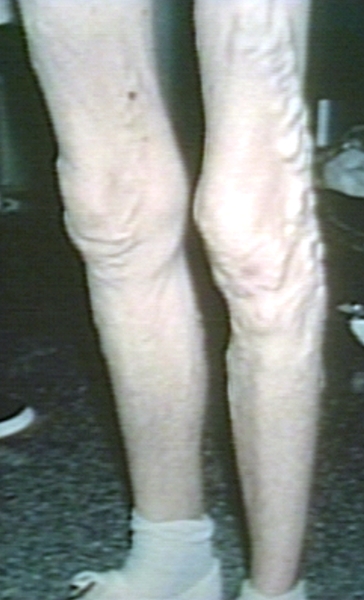Varicose veins history and symptoms
|
Varicose veins Microchapters |
|
Diagnosis |
|---|
|
Treatment |
|
Case Studies |
|
Varicose veins history and symptoms On the Web |
|
American Roentgen Ray Society Images of Varicose veins history and symptoms |
|
Risk calculators and risk factors for Varicose veins history and symptoms |
Editor-In-Chief: C. Michael Gibson, M.S., M.D. [1]
Diagnosis
History and Symptoms
Symptoms
- Aching, heavy legs (often worse at night and after exercise)
- Ankle swelling
- A brownish-blue shiny skin discoloration around the veins
- Skin over the vein may become dry, itchy and thin, leading to eczema (venous eczema)
- The skin may darken (stasis dermatitis), because of the waste products building up in the legs
- Minor injuries to the area may bleed more than normal and/or take a long time to heal
- Rarely, there is a large amount of bleeding from a ruptured vein
- In some people the skin above the ankle may shrink (lipodermatosclerosis) because the fat underneath the skin becomes hard.
- Restless Leg Syndrome[1]. Restless Leg Syndrome appears to be a common overlapping clinical syndrome in patients with varicose veins and other chronic venous insufficiency.
-
Varicose veins
(Image courtesy of Charlie Goldberg, M.D., UCSD School of Medicine and VA Medical Center, San Diego, CA)
References
- ↑ Schul M., McDonagh B., Guptan R.C. (2005). "High Prevalence Of Restless Leg syndrome In Patients With Chronic Venous Insufficiency." RLS & varicose veins
